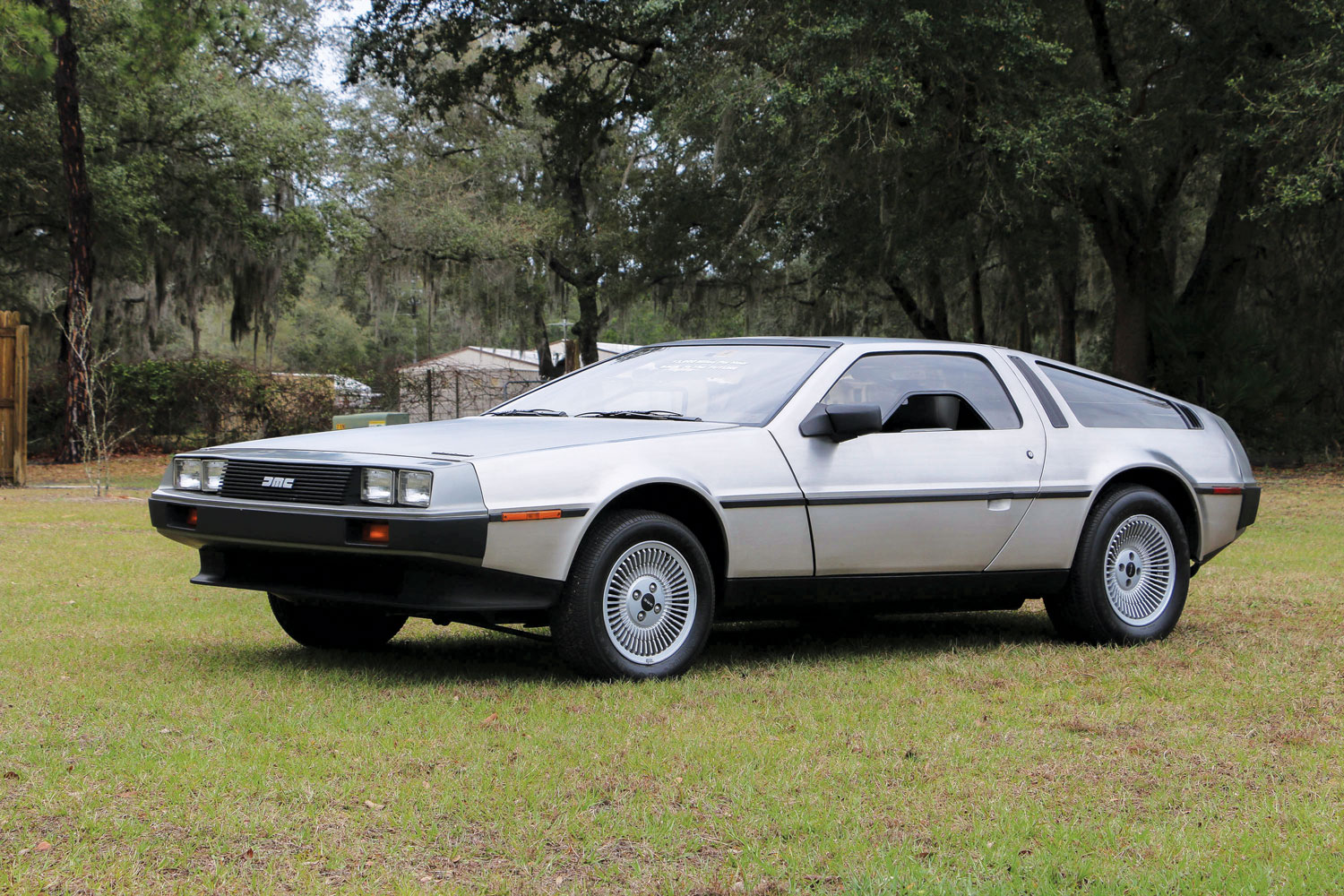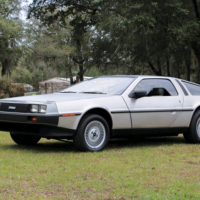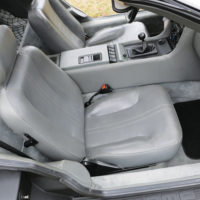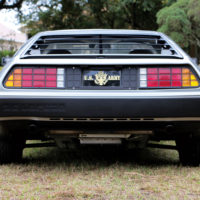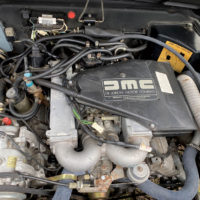SCM Analysis
Detailing
| Vehicle: | 1982 DeLorean DMC-12 |
 This car, Lot 244, sold for $51,700, including buyer’s premium, at RM Sotheby’s Online Only: Open Roads sale on February 28, 2021.
This car, Lot 244, sold for $51,700, including buyer’s premium, at RM Sotheby’s Online Only: Open Roads sale on February 28, 2021.
For most readers, the DeLorean story — or some version of it — is well known. Maverick GM exec goes off to start his own car company. After much delay, a safety-inspired, 2-seat sports car is built in strife-torn Belfast, Northern Ireland. Sold in the U.S. through a network of 345 assorted dealers, initial demand is high. But stories of poor design and questionable build quality make the rounds. Of course, allegations of drug trafficking to keep the financially struggling factory alive eventually crash John Z. DeLorean’s dream.
Note that little about the actual car gets mentioned most of the time, with the lurid tale overshadowing the sheet metal. Which is a shame, because love it or hate it (and there seems to be little middle ground), as the DeLorean turns 40 next year, we are seeing newfound interest in the car. For all that people do have to say about it, the most frequently mentioned shortcomings — that it is underpowered, that build quality was not up to par, that the not-so-stainless body is difficult to maintain — matter much less in a 40-year-old collectible than in a new sports car.
Running changes
All DeLoreans were built with the same 2.8-liter V6, an all-aluminum unit supplied by the Peugeot/Renault/Volvo consortium and also found in the Volvo 260 series, Peugeot 505/604, and the Renault 25, among others. This arrangement with PRV means that matching numbers mean little on a DeLorean, with the engine and chassis numbers having no correlation to the car’s VIN or to each other. For those who care, the DeLorean Museum has factory records for many cars identifying which VIN came with which engine and gearbox.
Our example, number 7,360 of the 8,975 that came out of the factory, has the more-common (by a 2-to-1 margin) gray interior and 5-speed manual transmission (interiors could also be had in black and a 3-speed automatic was also offered). But with more than 3,000 running production changes from start to finish, the later cars with higher VINs, like this one, often feel tighter, with fewer squeaks and rattles. This improved build quality was a product of a more experienced work force and the aforementioned changes in componentry seen on these later cars.
Check the mileage
The interior and exterior of our subject car both show wear consistent with the indicated 13,800 miles. While that may seem on the low side, it actually falls in the “just about average” range for a DeLorean. Speedometer drives do have a high failure rate, so mileage should be gauged against condition.
Saggy headliners are easily addressed, but water stains are more concerning. With an oversized gullwing-shaped hole in each side of the car, the importance of intact weather seals and good-fitting doors can’t be overstated. Windshield A-pillar trims (as opposed to the door A-pillar trim), tend to warp and pull away as they have on this car and will require windshield removal for proper replacement. Windshields are glued into place, and whether or not they break is down to the skill and experience of the glass shop. Replacement windshields run about $575.
The DeLorean’s battery is located behind the passenger’s seat, and unmonitored trickle chargers over the years have made the original passenger’s floor and sill carpets hard to come by. Molded reproduction carpet sets are available for around $800.
With fewer than 14,000 miles, I would have expected a bit nicer undercarriage on this car. The epoxy coating of the mild steel chassis is susceptible to damage from curb stops, road debris and hydraulic-fluid leaks. Any indications of rust on the underside merit a closer inspection. The rust seen on the driver’s side of the triangular fuel-tank closing plate is undoubtedly obscuring more extensive corrosion. Similar corrosion on the rear frame crossmember can likely be cleaned and treated.
It’s not uncommon to find low-mileage DeLoreans with original hoses, cooling fans and the plastic side-tank radiators, all of which should be replaced before any extensive driving takes place. Aftermarket alarms or cruise control (the latter seen on this car) have been known to cause problems and are typically undocumented, making troubleshooting electrical faults rarely worth the effort. Careful removal is recommended.
“Barn-find” DeLoreans that need head-to-toe refurbishment are not uncommon and will typically require attention to the Bosch K-Jetronic fuel injection, four-wheel disc brakes and automatic-transmission computers. A range of other updates have been deemed necessary over the years as well.
Parts prices for DeLoreans are reasonable compared to other low-volume offerings from the same era. The availability of restoration and service parts after 40 years is far better than would be expected. Literally millions of NOS, replacement and reproduction parts can be readily sourced, from mechanical bits to original stainless panels, glass, interior trim and more.
Ascending values
DeLorean prices were at their lowest in the 1980s, as the initial bite of depreciation was magnified by their orphan status. In the 1990s, values languished in the $10k–$20k range. A bit of a correction in the late aughties held through 2015, when the “future,” as seen in the “Back to the Future” movies, reignited media interest in the car.
What many thought would be a temporary bump in values, however, has only grown since. Good DeLoreans routinely trade above $40,000 today. As always, the quality (correct parts installed preferably by DeLorean-experienced mechanics) and quantity (a tune-up is more than plugs and wires) of the recent service history should be your guide.
With $16,000 in service by a marque expert in the past three years or so, that bodes well for the new owner, even if it appears more work is still to be done. I’m calling this sale right on the money.
There is little, I think, that can be bought in this price range that returns as much “bang for the buck” as a DeLorean. Virtually everyone from ages 8 to 80 knows what it is, so every gas stop has the potential to be a pop-up, one-car car show. ♦
(Introductory description courtesy of RM Sotheby’s.)
